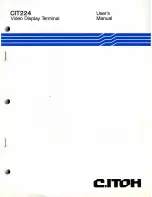
19
Description
3
Description
3.1
Proper use
All check lists and instructions for actions in these
operating instructions
must be met. Approved
accessories can be installed by specialist staff.
Use the
ebike
when it is in perfect, proper
working order only. National requirements may
apply to the
ebike
which the standard equipment
may not meet. Different regulations apply across
the country to the riding light, reflectors and
other components when riding on public roads.
The general laws and the regulations for the
prevention of accidents and environmental
protection in the respective country of use must
be adhered to.
The rechargeable batteries are designed to
supply power to the
ebike
motor only. Never use
the batteries for other purposes.
A compatible smartphone with the eBike Flow
app, available from the Apple App Store or the
Google Play Store, is required to use the on-board
computer to its full extent.
Each
ebike
is assigned a
ebike
type, which
determines its proper use, function and area of
use.
City and trekking
bicycle
Cycle for children
and young adults
Mountain bike
Racing bicycle
Cargo bike
Folding bicycle
City and trekking
bicycles are designed
for comfortable, daily
use and are suitable
for riding on public
roads.
Cycles for children
and young adults are
suitable for riding on
public roads.
Legal guardians must
read the operating
instructions before
putting the bike into
use. Tell children and
young people what
the operating
instructions contain
in a way appropriate
to their age.
Check the size of the
ebike
every 3
months for ortho-
paedic reasons.
Check compliance
with the maximum
permitted total weight
(PTW) every 3
months
Mountain bikes are
designed for sports
use. Its specific
design features are
tires
with a thick
tread, a reinforced
frame and wide
gear
range.
Mountain bikes are
sports bikes and not a
means of transport. In
addition to being
physically fit, riders
need time to adapt to
using the
ebike
.
Appropriate training
is required for its use.
It is especially impor-
tant to practice
braking and riding
around bends.
The strain on hands,
wrists, arms, shoul-
ders, the neck and
back is considerable.
Inexperienced riders
tend to brake too hard
and lose control as a
result.
Racing bikes are
designed for fast
rides on roads and
paths with a good,
undamaged road
surface.
Racing bikes are
sports bikes and not a
means of transport.
Racing bikes are
characterised by their
lightweight structure
and a design which is
stripped to the
minimum parts
required for riding.
The frame geometry
and the layout of the
operating elements
are designed to allow
the bike to be ridden
at high speeds.
Learning how to ride
slowly, apply the
brakes and get on
and off the bike safely
takes practice due to
the frame design.
The sitting position is
athletic. The strain on
hands, wrists, arms,
shoulders, the neck
and back is consider-
able. The sitting posi-
tion requires a high
level of physical
fitness.
Cargo bikes are suit-
able for transporting
loads on public roads
on a daily basis.
The transportation of
loads requires skill
and physical fitness
in order to balance
the additional weight.
The varied loading
conditions and
weight distribu-tions
require special
practice and skill
when braking and
riding in bends.
A longer period is
required to adapt to
the length, width and
turning
radius
. You
need to be cautious
when riding a cargo
bike. You must pay
attention to the traffic
on public roads and
the condi-tion of the
route accordingly.
Folding bicycles are
suitable for riding on
public roads.
Folding bikes can be
folded together and
thus save space
when they are trans-
ported, e.g. in cars or
on local transport.
The folding function
of the folding bicycle
makes it necessary to
use smaller wheels
and longer brake
cables. With
increased strain, you
should therefore
expect a reduction in
riding stability,
braking power,
comfort and dura-
bility.
Table 6: Proper use for every type of
ebike
Summary of Contents for BULLS 650-185
Page 211: ...210 Notes ...
Page 213: ...212 About these operating instructions ...
Page 215: ...214 About these operating instructions ...
Page 217: ...216 About these operating instructions ...
Page 219: ...218 About these operating instructions ...
Page 220: ...219 About these operating instructions ...
Page 221: ...220 About these operating instructions ...
Page 222: ...221 About these operating instructions ...
Page 223: ...222 About these operating instructions ...
Page 224: ...223 Documents 11 4 Charger operating instructions ABCDE ...
Page 225: ...224 Documents F 4A Charger DCG F H A I A J ...
Page 226: ...225 Documents F A I A J DCG F H ...
Page 227: ...226 Documents F DCG F H A I A J ...
















































